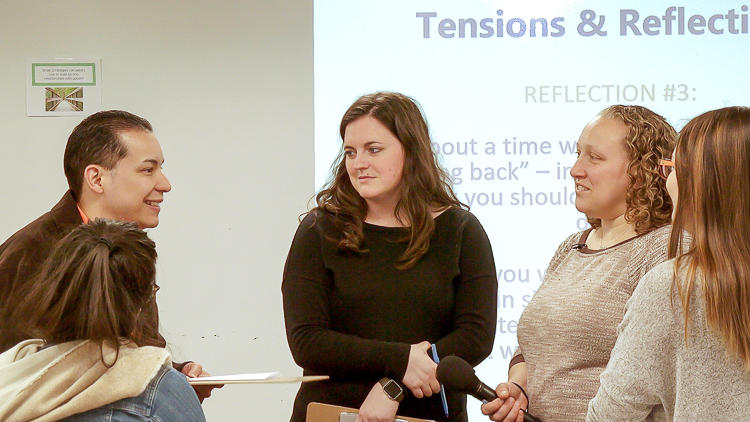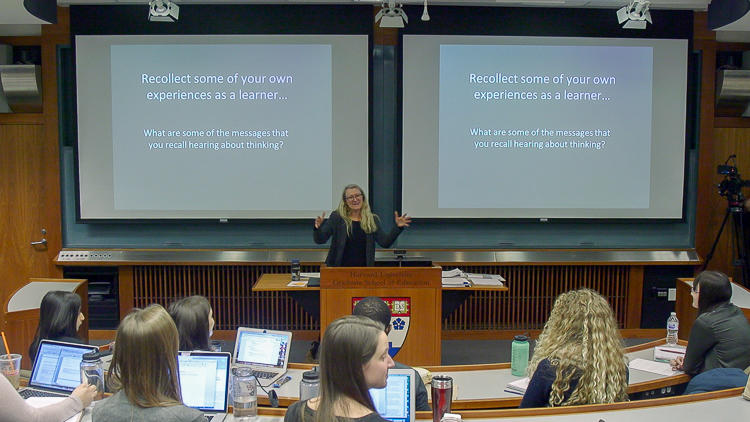Powerful class discussions feel and sound conversational, not forced. They brim with incisive commentary, active listening, follow-up questions, and thoughtful rejoinders. But these characteristics of rich academic discourse do not always come naturally to students. The discussion facilitator plays a pivotal role in laying the groundwork for such authentic dialogue by both articulating expectations and personally modeling those expectations. In this video, Tim McCarthy consciously uses students' names, makes eye contact, and articulates connections between students' comments to model strong listening and responding behaviors for the class.
Modeling norms for actively listening and building on comments
Instructor
Timothy Patrick McCarthy, Lecturer on History and Literature
Student Group
Undergraduate/Graduate
School
Harvard College
Course
Stories of Slavery & Freedom
Group Size
16 students
- Instructor nonverbal immediacy (behaviors like eye contact and smiling) has been correlated with student self-reports of enhanced and affective learning. Affective learning is an important consideration since students’ emotional responses in class could promote or impede student learning (Witt et al., 2007).
- Students overwhelmingly report that instructors in “safe classrooms” model participation and develop ground rules for participation (Holley & Steiner, 2005)
- Model what it sounds like to make connections between contributions or to build on another individual’s ideas. This sends students the message that participating in a discussion involves not only speaking but also active listening.
- Underscore how students’ ideas intersect. In discussion, students may make similar points without acknowledging such intersections. By making those connections explicit, students may be more likely to make such connections routinely.
- Set the expectation early on that all students hold themselves accountable to participate in some capacity during discussions. Do this especially when it comes to classes of relatively few students. This emphasizes to students that their contributions carry weight and remain vital to shaping class discussions.
- This DataWise article on "The Power of Team Norms" describes not only how to establish norms but also how to keep them alive throughout a course
- “Facilitating Effective Classroom Discussions” by professors at Virginia Tech discusses the benefits of student-to-student discussions in writing classrooms




